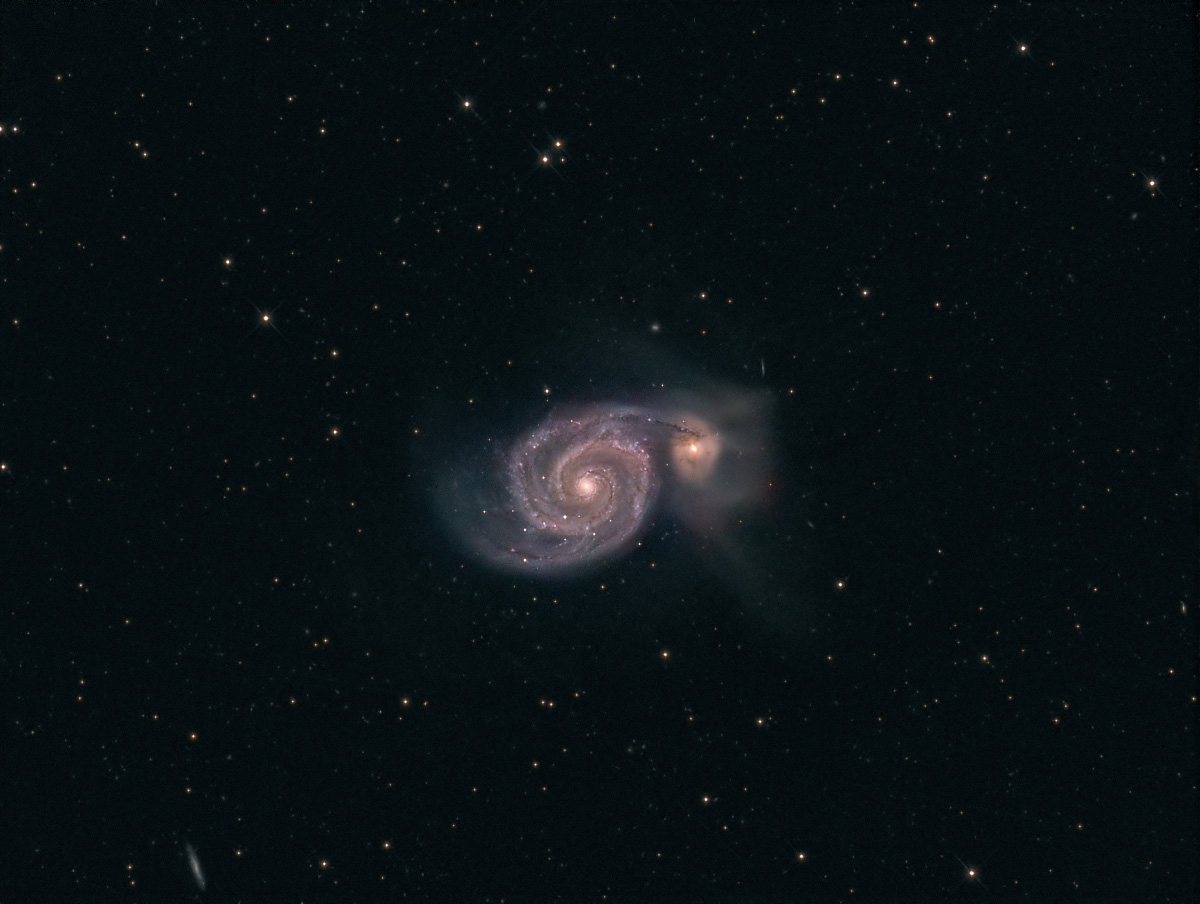
In the image above, north is to the right and east is up.
The famous Whirlpool galaxy M51 was one of Messier's original discoveries of 1773. It is not a single object, but a pair of two galaxies in close contact with each other. The beautiful face-on spiral galaxy is designated NGC 5194, the smaller companion galaxy to the north NGC 5195.
M51 is the dominating member of a small group of galaxies. As it is about 28 million light years distant but still very conspicuous, it is actually a large and luminous galaxy. It is often handled as a prototypical example of a type Sc galaxy with large, open spiral arms and a small central bulge. The spiral arms are dominated by young blue stars, dust (seen as dark lanes in the spiral arms) and HII-regions (seen as isolated bright spots in the spiral pattern).
This galaxy was the first one where the spiral structure was discovered, in 1845 by Lord Rosse, who created several scatches of this galaxy, among those also some very careful and quite accurate paintings. According to the present theory, the pronounced spiral structure is the result of NGC 5194's close encounter with its less luminous neighbor, NGC 5195. Due to this interaction, the gas in the galaxy was disturbed and compressed in some regions, resulting in the formation of new young stars. As is common in galactic encounters, spiral structure is preferably induced in the more massive galaxy.
There are several more distant galaxies in the above image visible as small nebulous specks, the brightest of these is IC 4263 located near the lower left corner.
Exposure Data